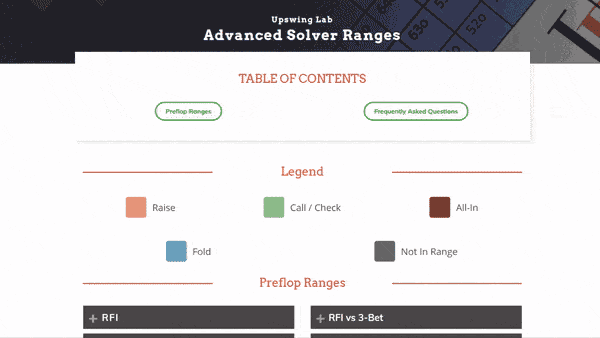Limping Poker Strategy
- Limping Poker Strategy For Dummies
- Poker Strategy Tsl
- Poker Strategy Starting Hands
- Limping Poker Strategy Games
- Limping Poker Strategy In Tournaments
- Limping Poker Strategy Definition
Poker pro Jimmy Fricke discusses some considerations for limping preflop in no-limt hold'em tournaments and cash games. Overlimping, or limping behind, is the act of choosing to limp AFTER one (or more) players have already limped preflop. Not to be confused with open-limping (being the first person to enter a pot preflop by limping in), overlimping can have some serious advantages when done properly. Jul 20, 2018 Open-limping (just calling the price of the big blind as the first player in the pot) is basically never a good strategy. This is a topic we have discussed many, many times, but it’s worth revisiting. Open-limping is a weak and passive play that leaves you few ways to win the pot.
Limping Poker Strategy For Dummies
If you’re new to Texas Hold’em and have been reading through some poker tips for beginners, you’ve probably heard it time and time again that aggression is essential in poker. Also that aggressive players are the ones to win more often. In general, this is true, and you usually want to stay on the offensive side of things. Taking control of the pots and putting your opponents to the test.
However, now and then, a situation arises before the flop where being aggressive would be counter intuitive. In certain spots, you should be happy to limp along with everyone else, see the flop, and only proceed to pile on the pressure if and when you make your hand. On the other hand, limping first is rarely a good option.
Limping in Multi-way Pots with Small to Medium Pocket Pairs
When you’re dealt a hand like pocket 2’s through pocket 8’s, you have an excellent hand but not the one that’s particularly strong if you get a lot of action before the flop. These are the type of hands where you want to ideally see a cheap flop, hit your set, and then proceed to make your limp-happy opponents pay with their top par, mediocre kicker or even two pair.
For example, you’re seated on the dealer button with pocket 6’s and three players limp in front of you. Your best play here is to limp along. By raising, you’re essentially turning your hand into a bluff and could potentially use the opportunity to see the flop. By over-limping, you won’t be reopening the action and could potentially stack someone who decided to get cute with a big pocket pair from an early position.
Suited Connectors and Limping
Suited connectors are another group of hands where limping along can often be the best play. However, unlike small pocket pairs, these hands can be tricky to play. Because you might end up with a pretty strong hand in terms of general poker hand rankings but still being the second best.
So, unlike small pocket pairs, where you pretty much always want to see the flop as cheaply as possible, you need to be more picky with suited connectors. You should probably only limp along in a late position (dealer, cutoff) and not every time. In multi-way pots, you should also stay away from the lowest of suited connectors (like 45 or 56) and gravitate towards higher ones, like 89 and 910.
Poker Strategy Tsl
Limping Strong Hands to Trap
Limping with the strongest part of your range, i.e., big pocket pairs and hands like AK suited, can be a part of your game-plan. However, you need to be very selective here. You can only do it if you also have some other hands in your limping range from early positions. Otherwise, your hand becomes too transparent and observant players at the table will know how to use this against you.
An excellent time to limp your big hands from an early position is when you have a maniac at the table who doesn’t care about getting trapped and makes big raises almost every hand. With this kind of dynamics, you can be pretty sure there will be some action to follow, giving you a chance to spring the trap and make a big re-raise when the action comes back to you.
Another situation where limping strong can be a good idea is in tournaments where you have an awkward stack of around 15-20 big blinds.
Other players at the table might fail to notice your stack size or fail to understand that you’re very likely to be limping strong here and raise regardless. If they pick up some callers in between, that’s even better for you, as there will be more chips in the middle when the action gets back to you and you move all in.
Check out the other articles in this poker strategy series here:
– Part 1 of our Poker Strategy Tip Series: Poker Tip #1 Playing Suited Connectors
– Part 2 of our Poker Strategy Tip Series: Poker Tip #2 Check Raising Strategy
– Part 3 of our Poker Strategy Tip Series: Poker Tip #3 Slow Playing Do’s and Don’ts
– Part 4 of our Poker Strategy Tip Series: Poker Tip #4 Blockers and How to Use Them
– Part 6 of our Poker Strategy Tip Series: Poker Tip #6 Squeeze Play – Top Things to Consider
– Part 7 of our Poker Strategy Tip Series: Poker Tip #7 Adjusting Versus Different Opponents

In my books I’ve often given some uncompromising advice. Don’t limp preflop, ever. In this article, I walk that back just a little bit.
I think most people limp way too often. The biggest problem limping comes when people are “trying to see a flop” — with the goal being either to make a great hand or (much more likely) to end up folding either on the flop or turn. When you limp this way, you end up playing hands like this.

A player limps. You limp next with K 5 for $5 in a $2-$5 game. The next player raises to $25. The first limper calls, and you call. There’s $82 in the pot.

Poker Strategy Starting Hands
The flop comes J 6 5. The first limper checks, you check, and the preflop raiser bets $45. The first player folds, and you call.
The turn is the A. You check, and the preflop raiser bets $90. You fold.
The total loss in this hand was $70. That, by itself, doesn’t make playing the hand bad. However, for hands like these to be profitable, the relatively common $70 losses you will endure must be more than compensated by wins. In practice, you will need both fairly frequent small wins plus occasional large wins to make up for the steady losses.
The fact is, most $2-$5 players who limp and play hands like this one don’t win pots often enough or big enough to make up for the losing pots. And, therefore, they are slowly leaking money every time they make one of these limps.
My goal with my “don’t limp preflop ever” advice is to encourage you to cut hands like these cold-turkey from your game. Don’t wean yourself off this habit. Just get rid of it entirely. For most $2-$5 level players, just stopping this bad habit will improve your bottom line substantially.
Limping Poker Strategy Games
But the reality is more nuanced. In fact, if you truly adhere to my “don’t limp preflop ever” rule, you are missing a few opportunities. And if you are an excellent post-flop player for your level, by refusing to limp, you are sometimes missing a whole lot of opportunities. So here are a few situations where limping can be good.
When The Stack Sizes Are Awkward
The first time limping tends to make sense is when the stack sizes are awkward. Say your opponents in a $2-$5 game are playing a range of stack sizes from $80 to $1,500. A few players are in the $150-$250 range. A few others are in the $500-$1,000 range.
There may be many hands that you’d be happy to play, perhaps, against a bad player with $800. Let’s use 8 5 as an example. The problem is, however, that as soon as one of the shorter stacks enters the pot, your hand loses all its value. Because while your 8-5 might make money if you have plenty behind to play with against the bad player, if you’re forced to commit most of the money preflop and on the flop, 8-5 just isn’t very good.
So say a player limps, and then the bad player with $800 limps in middle position. You’re in the cutoff with 8 5. In one of the blinds is the player with the $80 stack, and the button has $220.
If you raise here, and either the button or the very short stack decides to play, then you’ve lost most of the value of your hand. The $80 stack might just reraise you all-in. Or the $220 stack could call you on the button, and now you have to play the weak hand out of position with a small stack-to-pot ratio.
Limping Poker Strategy In Tournaments

Limping Poker Strategy Definition
It’s probably better to limp and hope the shorter stacks either limp along or fold out. If the guy with $80 decides to shove all in, you can just fold your limp. But, if all goes well, you should be able to see a flop against the bad player with $800.
In this case, limping is almost as good as raising when you look at your upside (playing a hand in position against a bad player), but it goes a long way to limit your downside when things go wrong. So in these situations, go ahead and limp.
When You Expect To Get Action
The classic rationalization for limping goes like this. “I want to see a flop. If I miss, I know how to get away from the hand. But if I hit it, I can win a big pot.”
In today’s games, the assumption, “If I hit it, I can win a big pot,” is often very wrong. Players aren’t falling all over themselves to call huge river bets with beaten hands. In some games, it can be hard to find someone willing to pay even $50 or $100 to see your flush.
Limping tends to be not-so-good when no one at your table is willing to pay off river bets.
But not every game in 2016 is nitty. When you do find a great game with lots of river action, this old logic for limping becomes more correct. The more you can rely on winning a big pot for your big hands, the more you should try to see flops cheaply with marginal starting hands.
Not only should you play some marginal hands for a limp that you might not play in a nittier game, but it can also make sense to limp some hands that you might raise in a nittier game. For example, a hand like 10 8 can be a great bluffing hand in a nitty game, and I might raise that hand on the button to set up a likely post-flop bluff.
But in a loose game where there’s a lot of action, there’s less incentive to raise the hand preflop, and you might be better off just limping in.
Final Thoughts
I was a little hesitant to write this article, since I think that most people, most of the time, are making errors when they limp into pots in $1-$2 and $2-$5 level no-limit games. The “no limping ever” advice works great to cut out all these bad plays with one simple rule. If you think you are prone to making limping errors, then I would suggest staying strong with no limping ever.
But if you feel like you have a handle on bad limps, and you want to figure out how to add limping back into your game in a positive way, these two situations are good places to start. You can limp in with some hands when you’d like to play a pot against a particularly bad player, but the stack sizes of some of your other opponents will making playing a raised pot awkward. And you can also limp into pots when you perceive that your opponents are particularly likely to give you action on a big hand.
If you try out limping in these situations, you should see some good results. ♠
Ed’s newest book, The Course: Serious Hold ‘Em Strategy For Smart Players is available now at his website edmillerpoker.com. You can also find original articles and instructional videos by Ed at the training site redchippoker.com.